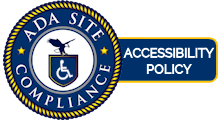
Sharing the Road
Safety on our roads is a shared responsibility—whether you’re walking, biking, riding a motorcycle, driving a car or responding to emergencies. Too often, preventable crashes happen because of distracted, impaired or careless behavior. While many recognize the risks, far fewer adjust their actions behind the wheel or on the street.
Every decision made on the road impacts lives. By choosing to slow down, stay focused and respect others, you’re helping to make Santa Clarita’s streets safer for everyone. The City of Santa Clarita is committed to fostering a strong traffic safety culture rooted in awareness, respect and responsibility.
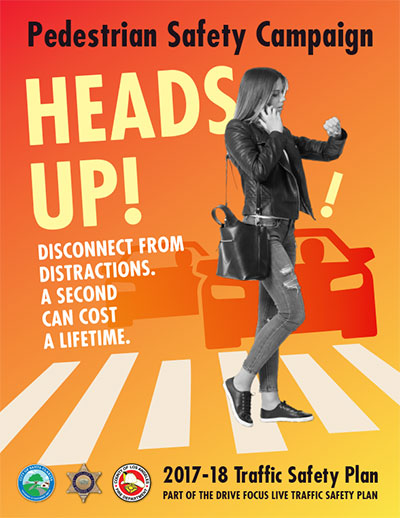
A pedestrian struck by a vehicle traveling at 40 mph has an 85% chance of being killed.
The majority of fatal pedestrian crashes occur between 6:00 p.m. and midnight, when visibility is low.
Children under 15 and adults over 65 are at a higher risk of being seriously injured in pedestrian collisions.
Unexpected movement into traffic is a leading cause of pedestrian injuries among children.
Heads Up! Pedestrians, See and Be Seen
Since incorporation, the City of Santa Clarita has emphasized the safety of our residents as they travel throughout the City. Historically, the traffic collision rate has remained well below the state average. This is achieved through strategic partnerships with our local Santa Clarita Sheriff’s Station, the City and the local community. These partnerships have led to the development of specific programs, such as Heads Up!, aimed at raising awareness and reducing traffic collisions.
In 2024 alone, 73% of drivers were found at fault in collisions involving pedestrians in Santa Clarita, highlighting the need for greater awareness and responsibility on the road. Pedestrians are some of the most at-risk people on the road because they don’t have the protection that vehicles provide. Unlike drivers and passengers, pedestrians aren’t surrounded by seat belts, airbags or metal frames. Whether you’re walking to school, work or your neighborhood, it’s important to take these extra precautions when near or crossing roadways:
- Understand what the crosswalk signals mean.
- Make eye contact with drivers.
- Ensure drivers see you and understand your intention to cross before stepping into the street.
- Avoid distractions.
- Stay alert and aware of traffic around you, especially at intersections. Using headphones or electronic devices while walking can reduce your awareness.
- Never assume drivers will yield.
- Even if you have the right of way, a driver may be distracted, impaired or ignoring traffic laws—always double-check before crossing.
- Look to Live. No matter the intersection, low-traffic or high, always look up and be aware of what the cars are doing.
Safety Tips for Parents
- Choose safer walking routes.
- Select paths with less traffic and fewer intersections whenever possible.
- Make sure you’re visible.
- Wear bright-colored clothing, and carry flashlights or wear reflective gear when it’s dark or visibility is low.
- Know your child’s limits.
- Practice safe crossing habits.
- Show children never to enter the street from between parked cars or behind bushes.
- Review school bus safety.
- Teach children how to safely wait, board and exit the school bus. Remind them to stay off the roadway while waiting and to follow all bus safety rules.
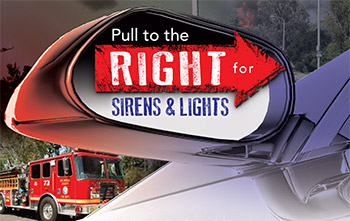
1 in 4 (25%) drivers don’t know what to do when an emergency vehicle approaches.
In California, drivers are legally required to pull to the right and stop when an emergency vehicle with lights and sirens approaches.
Failure to yield to emergency vehicles is a leading cause of traffic delays and preventable crashes during response times.
When drivers don’t yield properly, response times increase up to 20%, putting lives at greater risk.
A one-minute delay can reduce survival rates for cardiac arrest by 7–10%.
Heads Up! Pull to the Right for Sirens and Lights
If you or someone you love needs emergency assistance, you want help to get there right away. In Santa Clarita, our SCV Sheriff’s Department, L.A. County Fire Department, CHP and local ambulances provide life-saving services every day. When their sirens are on, it is your job to pull to the right so they can do their job!
The law is very specific; drivers must yield the right-of-way to an emergency vehicle, and failure to do so can cause serious accidents or delays in ambulances, fire engines and fire trucks arriving at the scene of an emergency. Firefighters are careful to avoid vehicle collisions by driving slowly when traveling against traffic or coming to a complete stop at intersections. However, the cooperation of every vehicle on the roadway is essential.
Below are some simple rules to follow when you’re on the road and encounter an emergency vehicle during response signs:
DO:
- Stay calm.
- Safely pull to the right and come to a complete stop.
- When an emergency vehicle approaches you from behind while you are stopped at an intersection, stay where you are unless you can pull to the right.
- On a four-lane highway or street without barriers, both sides of traffic should pull to the right.
- Be careful when driving by or around a motor vehicle accident or any situation where emergency vehicles are parked and the firefighters are working.
- Stay at least 500 feet behind emergency vehicles when displaying flashing warning lights and sounding a siren.
- If you’re in the middle of an intersection, continue through it, then pull over. Never stop in the middle of an intersection.
- If you’re traveling on a high-speed road or if there is no room to stop, slow down as much as possible.
- If you are in the left lane, pull over into the right lane as traffic in the lane to your right moves over.
- If you cannot move to the right because of another vehicle or obstacle, just stop. Your action will let the driver of the emergency vehicle know what you are doing and allow the driver to anticipate where to drive.
- If you’re walking and see or hear an emergency vehicle approaching, stay alert, pause before crossing and wait until it’s safe and the vehicle has passed, even if you have the walk signal.
DON’T:
- Do NOT panic.
- Don’t disregard the presence of the emergency vehicle by continuing to drive.
- Don’t stop in the middle lane and assume the emergency vehicle will just go around you.
- Don’t play your radio so loudly that you are unable to hear sirens.
- Don’t pull to the left in the center lane or left turn lane.
- Don’t race ahead to make the green light or turn before the emergency vehicle gets there.
- Don’t turn quickly to the left onto a street or driveway.
- Don’t drive through a red light or stop sign when an emergency vehicle approaches from behind.
- If the emergency vehicle is traveling on the opposite side of a divided highway or street, you do not need to pull over.
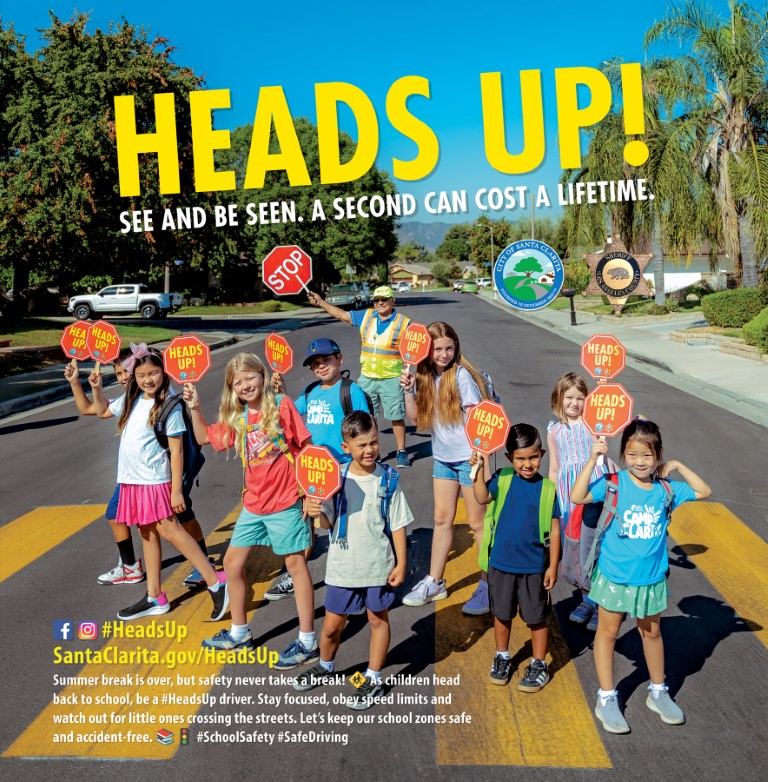
More than 25,000 children are injured every year in school zone accidents across the U.S.
1 in 3 drivers admitted to being distracted while driving through a school zone.
Teen drivers are more likely to be involved in school zone crashes due to inexperience and distractions.
Crossing guards significantly reduce pedestrian-related accidents when used correctly.
Heads Up! Expect Children in Crosswalks
Remember to safely share the roads with school buses, pedestrians, bicyclists and provide children with the necessary knowledge to stay safe at school. Understand your child’s limitations. They may not be able to judge speed and distance from oncoming traffic accurately. They are also smaller and harder for drivers to see. Children learn through experience, teach them the safe way to walk to school. Before your children head out, remind them of these year-round safety tips below:
- Always cross street corners where there are traffic signals, designated crosswalks and stops signs.
- Make eye contact with drivers before crossing in front of them.
- Never cross the street distracted. This includes while on an electronic device, texting, talking on a phone or with headphones on.
- Always walk on sidewalks. If there are no sidewalks, walk facing oncoming traffic.
- Always look left, right and left again before crossing the street.
- Beware of cars that are turning or backing up.
- Never run out into the street or cross between parked cars.
- Never walk to or from school alone if you are a child; always stay with a school friend, family member or trusted neighbor.
- Wear bright-colored clothes, carry flashlights and wear reflective gear.
- Never wait for the school bus in the roadway! Learn the safety rules for waiting at the bus stop, getting on and off the bus and riding the bus.
- Don’t double park. it blocks visibility for other children and vehicles.
- Don’t load or unload children across the street from the school.
- Carpool to reduce the number of vehicles at the school.
- Share the road with students.
- Don’t block the crosswalk. This redirects pedestrians to go around you; this could put them in the path of moving traffic.
- When flashers are blinking, stop and yield to pedestrians crossing the crosswalk or intersection.
- Always stop for a school patrol officer or crossing guard holding up a stop sign.
- Take extra care to look out for children in school zones.
- Don’t honk or rev your engine to scare a pedestrian, even if you have the right of way.
- Never pass a vehicle stopped for pedestrians.
- Always use extreme caution to avoid striking pedestrians wherever they may be, no matter who has the right of way.
Sharing the Road with School Buses:
- Never pass a bus if it is stopped to load or unload children.
- If the yellow or red lights are flashing and the stop arm is extended, traffic must stop.
- Stop far enough back to allow children space to safely enter and exit the bus; the area ten feet around a school bus is the most dangerous for children.
- Be alert; children often are unpredictable.
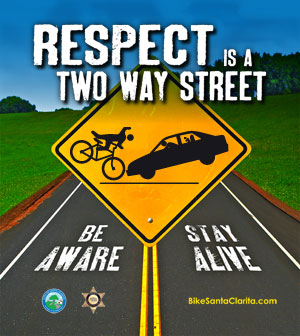
California has the highest number of bicycle fatalities of any state in recent years.
27% of fatal bicycle crashes occur at intersections.
Only 1 in 4 adult cyclists regularly wear a helmet in the U.S.
Nearly 75% of fatal bicycle crashes happen in locations without dedicated bike lanes.
Heads Up! Cyclists, Respect is a Two Way Street
In Santa Clarita, bicycle collisions increased by 14% from 28 in 2023 to 32 in 2024. When combined with pedestrian-related collisions, the total number rose by 18%, from 62 to 73. The leading cause was failure to yield—a clear sign that we need to be more aware, cautious and respectful on the road.
As the City continues to grow, so does the number of people choosing to bike as a fun and eco-friendly way to get around. Here are some important tips for cyclists, supported by organizations like the League of American Bicyclists and Yield to Life:
- Follow the Law. Bicycles are considered vehicles. Obey stop signs and traffic signals. Always ride with traffic in the rightmost lane going your direction.
- Be Predictable. Ride in a straight line. Don’t swerve between parked cars. Always signal your turns and check your surroundings before changing lanes.
- Be Visible. Wear bright clothing. Use a white front light and red rear light, even during the day. Avoid riding on sidewalks and make eye contact with drivers when possible.
- Think Ahead. Anticipate what drivers and pedestrians may do. Avoid the “door zone” of parked cars. Watch for debris, potholes and turning vehicles. Cross railroad tracks at right angles.
- Always Ride Ready. Before each ride, check your tires, brakes and chain. Make sure quick-release levers are secure. Always wear a helmet and carry tools or supplies in case of an emergency.
Tips for Motorists Sharing the Road
- Treat Cyclists as Equal Road Users. Cyclists have the same rights as cars. Expect them. Respect them. Share the lane safely.
- Be Patient. Wait to pass until it’s safe. Never tailgate. Give extra time and space at intersections and avoid honking close to cyclists.
- Pass Safely. Give plenty of space when passing. The wind from your car can throw off a cyclist’s balance.
- Watch for Cyclists When Turning. Whether turning right or left, always check for cyclists going straight through the intersection.
- Look Before Backing Up. Small children and bikes can be hard to see. Always back up slowly and carefully check your path.
- Check Before Opening Your Door. Use your mirrors and look behind you before opening your door into traffic.
- Practice Respect and Courtesy. Cyclists help reduce traffic and pollution. Support a safer community by giving them the space and respect they deserve.
- Use Your Horn Sparingly. Only use your horn if truly necessary, and never too close to a rider.
- Consider Riding a Bike Yourself. Trying cycling can help you understand the experience from a cyclist’s point of view and build empathy on the road.
Whether you’re behind the wheel or on two wheels, stay alert, stay respectful and share the road.
To learn more, visit BikeSantaClarita.com
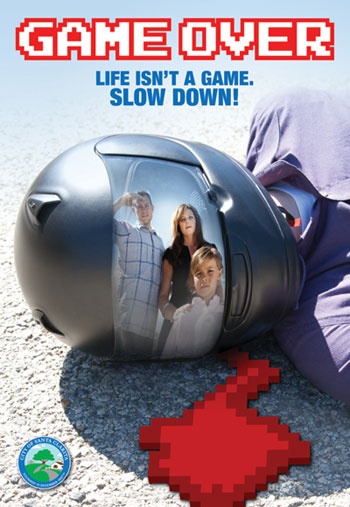
Motorcyclists are about 28 times more likely to die in an accident than passenger car occupants.
More than 5,500 motorcyclists were killed in crashes in the U.S. in 2022, accounting for 14% of all traffic fatalities.
In California, all motorcyclists and passengers are required by law to wear a U.S. DOT-compliant helmet while riding.
Head injury is the leading cause of death in motorcycle crashes.
Helmets are estimated to be 37% effective in preventing fatal injuries to riders.
Heads Up! Motorcyclists, Your Helmet is Your Seatbelt
California Highway Patrol’s Statewide Integrated Traffic Records System (SWITRS) data indicates that California has an average of 11,842.6 motorcycle accidents per year. The City of Santa Clarita wants to remind motorcyclists that if you are driving too fast and get in an accident, the life that’s lost may be your own. Riding can be fun, but the consequences of irresponsible driving can cost lives. The City is asking all motorcyclists to slow down, ride safe, stay Heads Up! and share the road.
Motorcycles offer freedom but less physical protection than cars. You can’t eliminate every risk, but you can control what you do. Follow these simple steps to keep yourself and everyone around you safer when riding:
Before Every Ride
- Gear up properly. Choose a helmet and riding apparel that are DOT-compliant
- Perform a quick systems check. Verify tire pressure and tread, test hand and foot brakes, ensure headlights and turn signals work and top off oil, coolant and brake fluid.
- Inspect for leaks. Look under the engine and fuel tank for oil or gasoline drips.
- Secure your load. If you carry cargo, balance the weight, fasten straps tightly and adjust suspension and tire pressure as needed.
- Plan your route. Check weather and road conditions in advance and choose routes with lower traffic or fewer hazards when possible.
While You’re Riding
- Obey all traffic controls. Stop at lights and signs, respect speed limits and stay within lane markings.
- Ride with the flow. Keep pace with surrounding traffic and maintain a safe following distance—at least two seconds behind the vehicle ahead.
- Signal and scan. Always check mirrors and blind spots, then signal well before changing lanes or turning.
- Be visible. Use your headlight—even in daylight—wear bright or reflective gear and position yourself where other drivers can see you.
- Ride defensively. Assume other drivers may not see you. Anticipate hazards, avoid riding in blind spots and be ready to react.
- Avoid risks. Don’t speed, weave through traffic or ride while impaired or distracted.
- Safe riding is a habit. Make these checks and practices part of every trip and you’ll help keep our community safer.
Electric Bikes
According to California Vehicle Code, most E-bikes are classified as conventional bikes. As such, the same rules of the road that apply to conventional bikes apply to E-bikes. There are three classes of electric bikes each with varying rules and regulations. It is the rider’s responsibility to know which class E-bike they are operating.
Please note, any vehicle with power in excess of 750 watts falls outside of these three classes and is not considered an E-bike.
- Class I, II and III E-bikes ARE allowed wherever traditional bikes can go, but riders must follow the same rules of the road:
– Stop completely at stop signs and lights.
– Signal your turns.
– Ride predictably—no weaving!
– Subject to ticketing and fines.
- Parents, please note:
– Class I and II – Helmets required for riders under 17, no license needed.
– Class III – Riders must be 16+ and ALL riders are required to wear a helmet, no matter the age.
Whether you’re behind the wheel or on two wheels, stay alert, stay respectful and share the road.
For E-bike information, including classification levels, rider requirements, and Santa Clarita E-motorcycle laws, visit BikeSantaClarita.com/EBikes/.

